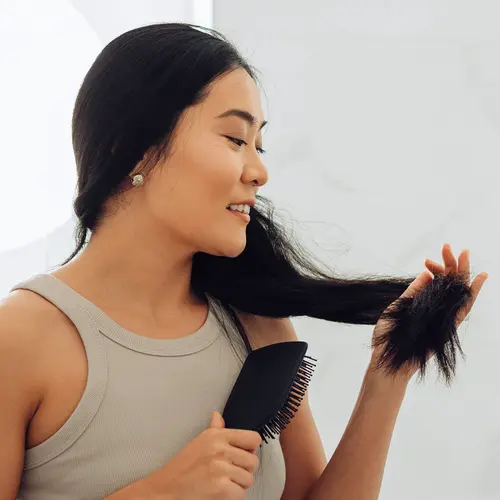For most people, beauty products are a quick, simple way to look great. But if you notice that you have skin reactions -- like irritation, rashes, or allergies -- to certain ingredients, these tips can help you steer clear.
1. Check the label. Look for products with the fewest ingredients. This will make a bad reaction less likely.
2. Do a patch test first. Before you start to use a new product, place a small amount on the inside of your elbow and wait 48 to 72 hours. If you notice no redness, swelling, itching, or burning on that spot, it’s OK for you to use.
3. Spritz the smart way. Always put fragrance on your clothes, not your skin. You’ll be less likely to have a skin reaction to it. It also helps prevent the fragrance from having a bad reaction with other products you use.
4. Be true to yourself. See how your skin responds. The labels "hypoallergenic," "dermatologist tested," "sensitivity tested," or "non-irritating" don't guarantee that your skin won't react.
5. Stop and soothe. If your skin reacts badly to a beauty product, stop using it immediately. You can sometimes use an over-the-counter hydrocortisone cream to help ease inflammation. In some cases, you might need a prescription-strength cream.
Top 2 Skin Reactions to Beauty Products
1. Irritation. Your doctor may call this “irritant contact dermatitis.” It’s the most common skin reaction to a beauty product. It can cause burning, stinging, itching, and redness in the area where you apply the product.
If your skin is dry or injured, it loses some of its natural protection against irritants. This means reactions can be harsher or happen more easily.
2. Skin allergies (allergic contact dermatitis). Sensitivity or a true allergy to a specific ingredient in the product causes redness, swelling, itching, or blisters on the skin. Fragrances and preservatives are some of the biggest culprits.
Even products that say they're unscented could contain a “masking agent,” which is a fragrance that covers up chemical scents. Though you may not smell it, it still could be there and cause an allergic reaction in some people.
To make sure no perfume is included, look for products marked “fragrance-free” or “without perfume.”
Preservatives are in almost every product that contains water. They need to be there, so it doesn’t spoil. All of the most common preservatives have been linked to skin allergies. But that doesn't mean they cause allergic reactions in everyone. They might not bother your skin at all.
Beauty Products Most Likely to Cause a Skin Reaction
These include:
- Bath soaps
- Detergents
- Antiperspirants
- Eye makeup
- Moisturizers
- Permanent wave lotion (particularly those containing the chemical glyceryl monothioglycolate)
- Shampoos
- Long-wearing lip stains
- Nail polish (particularly those containing formaldehyde)
- Fingernail glue containing methacrylate
Hair dyes can also be the source of skin reactions, especially those containing p-phenylenediamine as well as ammonium persulfate used to lighten hair.
Also, beauty products containing alpha-hydroxy acids (AHAs) may cause problems -- such as redness, swelling, blisters, rash, or itch -- for some people. It’s more likely with strong products, which have a concentration of AHAs over 10% or with a pH (acid level) of 3.5 or less.
For some people, tretinoin wrinkle creams and serums can cause irritant contact dermatitis.
Many people are sensitive to sunscreen. If that's true for you, talk to a dermatologist about how to best protect your skin from the sun. Look for sunscreens with very few ingredients and that are physical blockers (made with zinc oxide and/or titanium dioxide), which usually don’t cause allergic reactions.


